Life at Home: Four families share how their culture influences their lives
A look into how students' diverse cultural backgrounds affect their day-to-day life
February 18, 2020
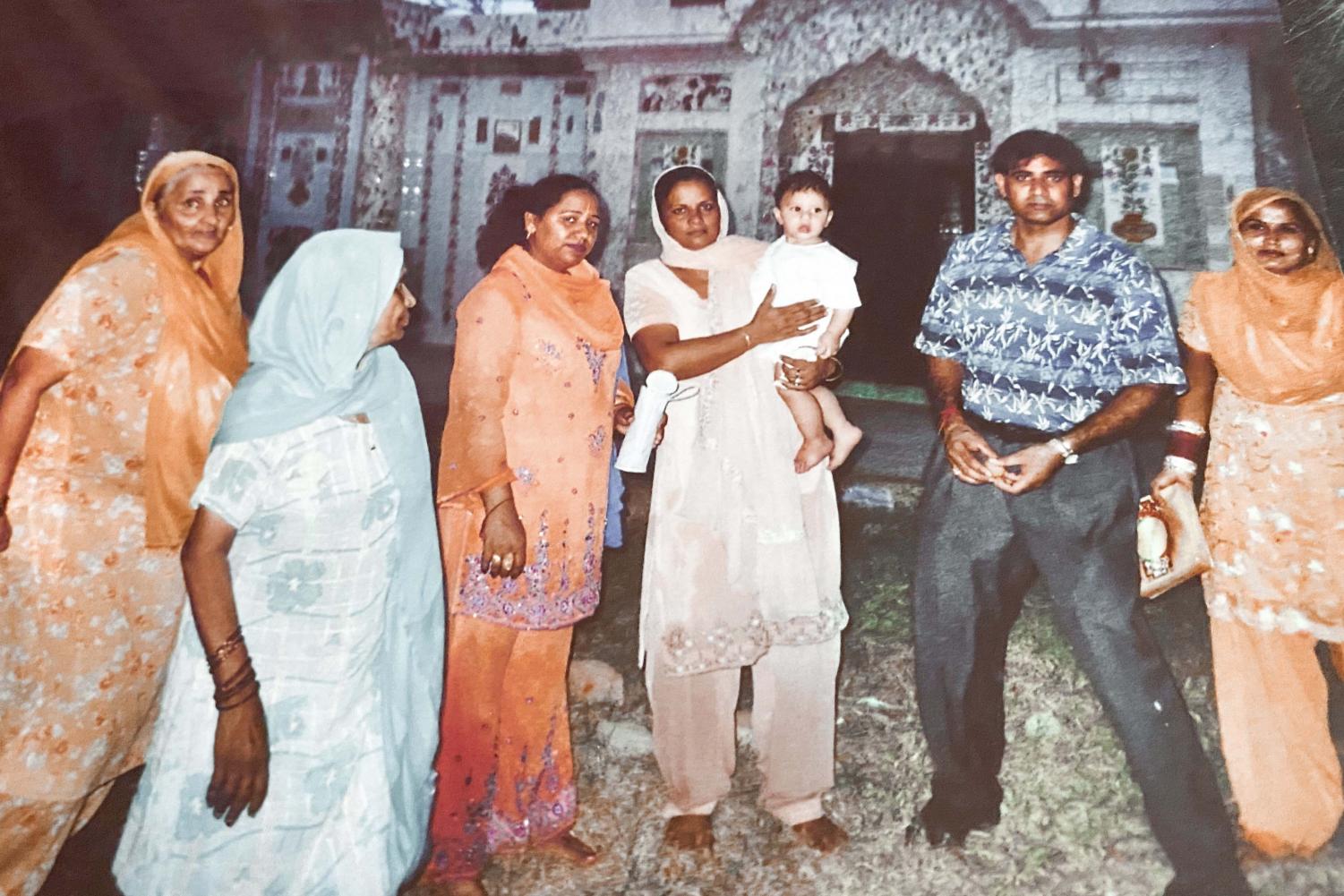
By Amit Kaushal // submitted photo
For his first birthday, freshman Amit Kaushal visited his family in Punjab, India
The Kaushals
Freshman Amit Kaushal’s family blends American and Indian cultures
Growing up speaking three languages has always been normal to freshman Amit Kaushal. Kaushal speaks Punjabi and Hindi with his family, and English with most everyone else. Both of Kaushal’s parents immigrated to America from Punjab, India, and with them, they brought their language and culture. Kaushal’s mother, Kirana, followed her husband to America seeking a better life and a place to start their family.
“We came to America for a better life. My husband lived here, so I came here with him because I didn’t want to be by myself, and after we moved we didn’t want to go back,” Kirana said.
The Kaushals have traveled to India multiple times since immigrating to the United States, and while Kaushal believes he is too “Americanized” to live in India, he loves being immersed in the culture and being able to experience the unique differences between his two homes.
“There’s less technology in India, and in America it’s more advanced. In India, you can go on the roofs of the houses, and fly kites and here you obviously can’t. I think they’re both unique in their own ways,” Kaushal said.
The differences between American and Indian cultures have also been applied to Kaushal’s life in other ways, like his friendships. Kaushal feels more connected to the friends in his community because of the culture they share.
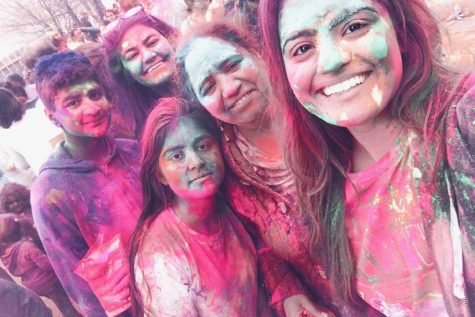
“I feel like with the friends in that community I can relate to them more since we have the same background,” Kaushal said. “We can crack jokes here and there about our culture.”
Kaushal notices that when he comes to school there are not many other people that share his ethnic background, which he says can be a good thing because it makes him more unique, but also limits him to be able to connect with people like him.
“Sometimes it has its perks of those like, ‘Oh, I’m the only one.’ It’s kind of cool, but then sometimes I wish there were some more people like me to connect with,” Kaushal said.
The temple the Kaushal’s attended is one place where Kaushal feels really connected with his culture. There is where they celebrate many Hindu holidays, including the most significant, Diwali.
“Our most important holiday is Diwali, the festival of lights,” Kaushal said. “It signifies good always wins against evil. We go to our temple and we light candles representing light and goodness.”
The Kaushals also celebrate American and Christian holidays, like Thanksgiving and Christmas, but for family purposes rather than religious reasons. Kirana’s reason for this was simple.
“We celebrate both and there’s nothing wrong with that because we are living here, and now we’re mostly American,” Kirana said.
Kaushal believes that attending services at his temple, his mother’s cooking, and speaking Hindi and Punjabi has helped him embraces and keep his culture alive, which he hopes to continue to do.
“I want to pass it down to my kids and I want my kids to pass down to their kids because I want to keep it going,” Kaushal said. “My parents immigrated here and they kept it alive. That’s what I want to do too because it’s my roots.”

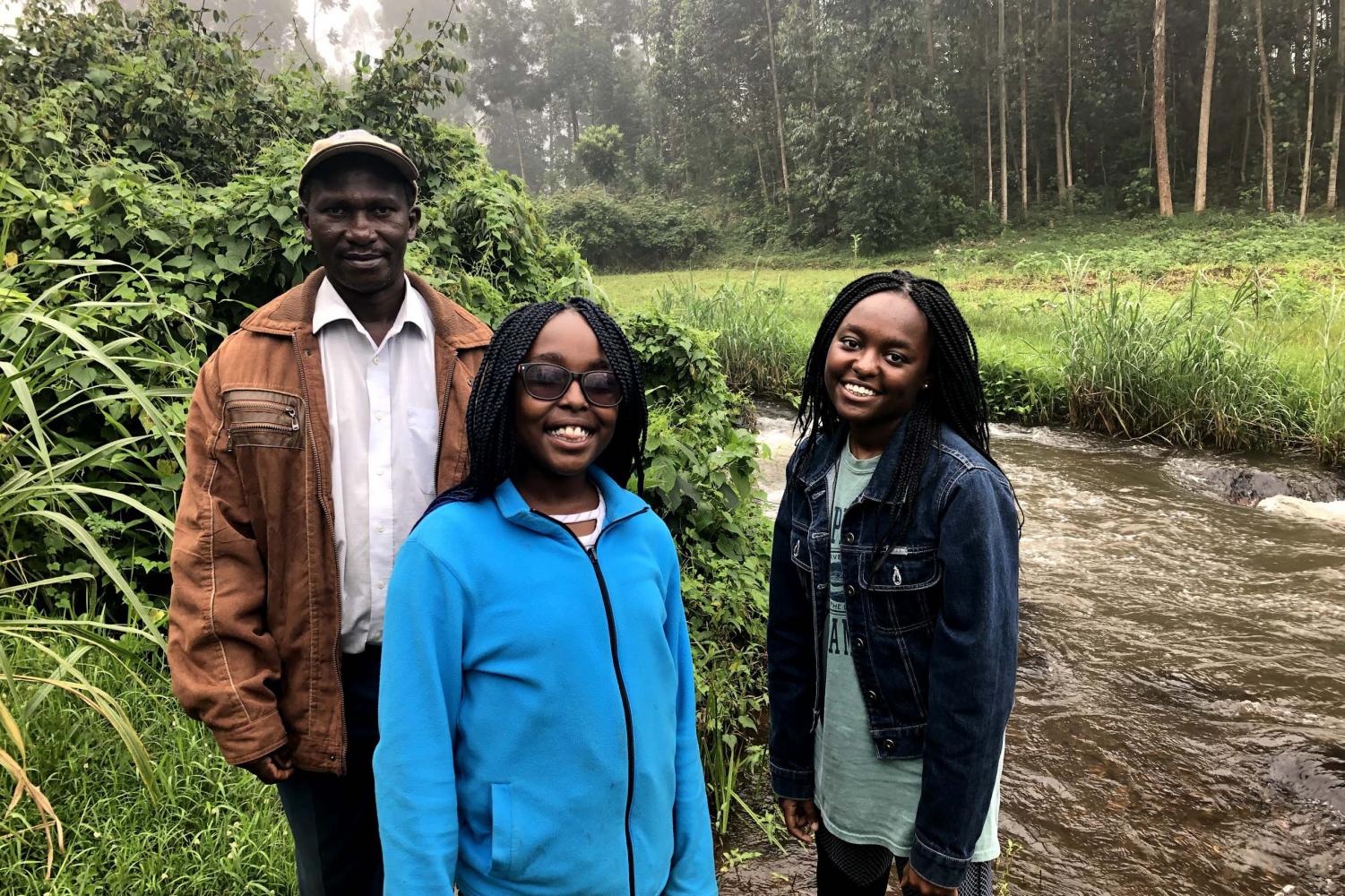
By Courtney Mahugu // submitted photo
Over the summer, junior Courtney Mahugu took a trip to Kenya with her family
The Mahugus
Junior Courtney Mahugu’s parents are from Kenya
High school in America is a one of a kind experience. Experiencing it for herself and for her parents is something junior Courtney Mahugu has been doing for the past three years. Mahugu’s parents both immigrated to America from small villages in Kenya and are learning about American culture through Mahugu as well as keeping their own African culture alive.
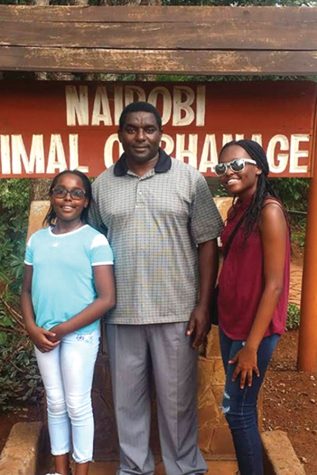
With her family, junior Courtney Mahugu visited the Nairobi Animal Orphanage during her trip to Kenya.
“My parents went to highschool in Kenya… they really don’t understand what it’s like to be an American Teenager… so life is challenging a little because I have to explain a lot of things,” Mahugu said.
Mahugu’s dad, Francis Nuthu, tries to keep his African culture alive in his house through one of his favorite things: food.
“I try to maintain the African culture through food, music and language…” Nuthu said. “African cuisine is diverse and delicious.”
According to Mahugu, the authentic dishes that her mother makes at home requires spices that are not commonly found in the U.S.
“We cook only Kenyan food in my house…so there’s a lot of spices involved,” Mahugu said. “Although you can buy those spices in America, there’s a lot of spices…that are easier to get in Kenya.”
In addition to the food of her culture, the Mahugus connect with people that share their African culture through their church, Prince of Peace, once a month.
“It’s a Mass where there’s a lot of singing and there’s African garments everywhere,” Mahugu said. “Everyone’s wearing whatever country they’re from and singing songs from their country. I get to hang out with kids who understand what it’s to be Kenyan.”
Mahugu enjoys attending church because of the variety of style.
“Everyone’s hair looks different…everybody’s got a style going on,” Mahugu said.
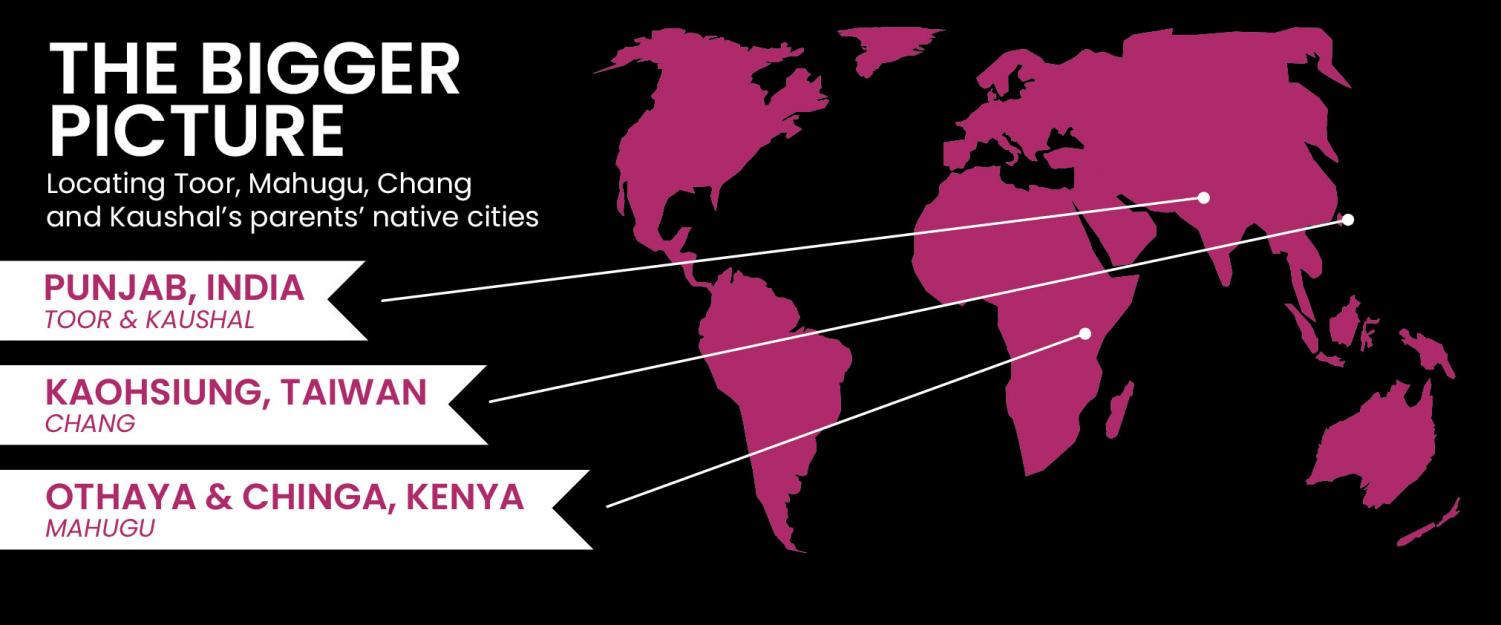
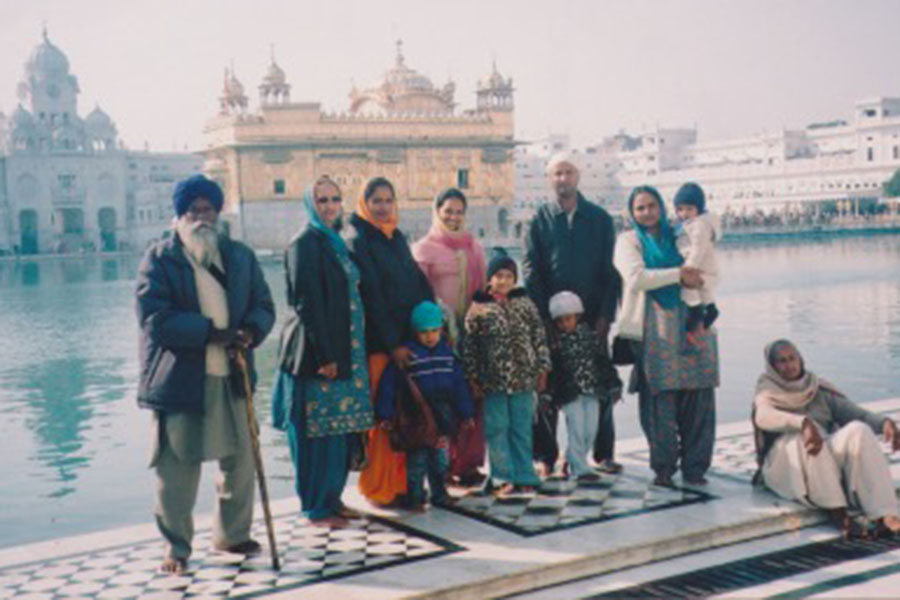
By Ashleen Toor // submitted photo
Along with her brother, junior Ashleen Toor visited Punjab, India when she was three years old.
The Toors
Speaking Punjabi at home is an important part of junior Ashleen Toor’s culture
The first words she said as a child weren’t in English; it was in Punjabi. Her parents immigrated to the U.S. to provide her and her siblings with more opportunities. While her parents left their native country, they made sure to pass on the Indian culture to their children. Even as a first generation U.S. citizen in her family, junior Ashleen Toor’s life at home closely resembles her parents’ native Indian culture.
Growing up, Punjabi has been Toor’s primary language. While she speaks English at school, at home and at her temple, Toor primarily speaks the native language that her parents had taught her first. Being able to speak Punjabi has opened doors for Toor to communicate in her native language when she travels back to India.
“I can communicate with people from my culture and people who I live with,” Toor said. “I feel like it’s a good thing to know because whenever we visit India, it’s really helpful to know what other people are saying to you and how to communicate with people.”
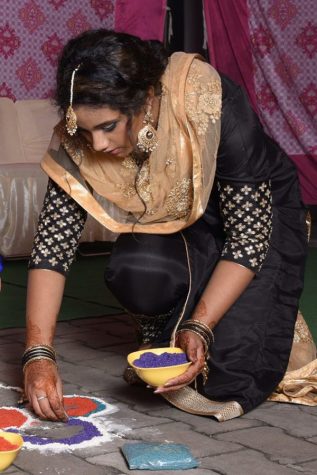
In a wadding tradition, junior Ashleen Toor makes a rangoli.
In addition to teaching her children how to speak Punjabi, Toor’s mother Kirendeep Kaur has taught her children about their culture and traditions in order to maintain their native culture.
“We try to speak our language and tell our kids what our culture and traditions are,” Kaur said.
Beyond her life at home, Kaur also takes Toor and her siblings to their temple, the Midwest Sikh Gurdwara, to immerse her children into a community that shares a commonality of the Indian culture.
“We have many programs in our church, so we try to take our kids over the years so they can know what Indian culture actually is,” Kaur said.
According to Toor, over 400 families at her temple share a close relationship on the basis of their religion and language.
“We’re really close knit, everyone knows who everyone is,” Toor said. “We all just come together on the basis that we’re all Sikh, and we all speak Punjabi, and that’s what we all relate to.”
While the community at her temple and her family has allowed Toor to connect with people of her culture, traveling to India has allowed Toor to truly appreciate her Indian culture.
“I love it. When we go there, I just love seeing the culture, the food, all the people talking, the clothing, everything makes me feel really proud of my heritage,” Toor said.
Despite not being able to see many students that share her culture at school, Toor is glad that her peers are open to learning about her Indian culture.
“I like that people are able to accept me for who I am; people actually have an interest in my culture,” Toor said. “It makes me happy to know that people you know want to learn about your culture.”
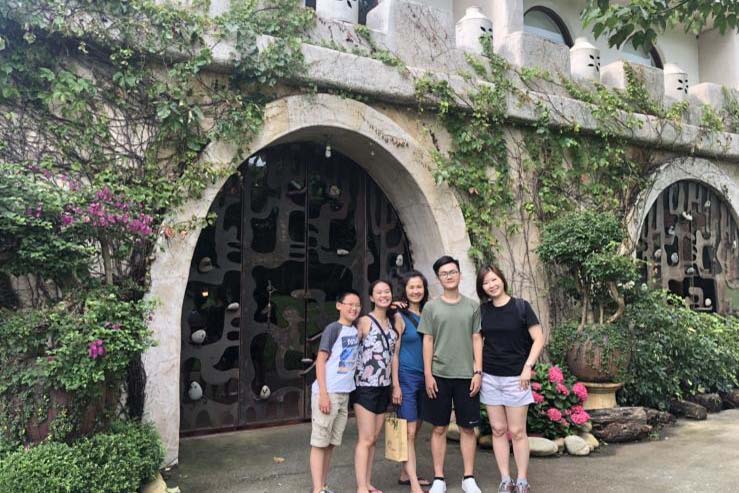
By Sophia Chang // submitted photo
Alongside her family, freshman Sophia Chang went on a vacation to Taiwan.
The Changs
Freshman Sophia Chang and her family value authentic food
Growing up as a first-generation US citizen has opened freshman Sophia Chang to two different cultures. Her parents had immigrated from Kaohsiung, Taiwan and with them, they brought the Taiwan culture into their through food.
Inspired by the food in Taiwan, Sophia’s father Scott Chang opened the restaurant Blue Koi to serve traditional Taiwanese dishes.
“It really was a dream of our family to own a business,” Scott said. “We grew up loving the food in Taiwan.”
Of all restaurant chains dedicated to serving Americanized Chinese food, Chang believes that traditional Asian food is a significant part of her culture.
“I just like eating Asian food; that’s like the biggest thing for me,” Sophia said.
With food being an important component of her culture, traveling to Taiwan has allowed Sophia to taste on the unique streets foods found only in Taiwan and connect with her extended family.
“We always visit mom’s family, and we usually take two weeks to do that,” Sophia said. “They take us everywhere to go eat a lot of food. We also take lots of pictures and road trips.”
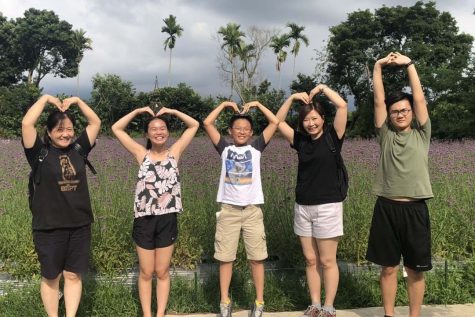
While in Taiwan, freshman Sophia Chang visited the Miaoli Garden.
For Scott, being able to take his children to his native hometown of Taiwan is a worthwhile experience.
“It’s kind of like your parents homeland, so it’s almost how I feel like you are coming home,” Scott said. “People in Taiwan are just so friendly and welcoming.”
While Sophia is not able to speak Mandarin well with her family in Taiwan, she is able to comprehend what they are saying by listening.
“Although I can’t communicate very fluently with them, I still understand things that they’re saying because I’m more of a listener,” Sophia said.
While traveling to her parent’s home town allows her to connect with her culture, Sophia also has outlets to connect with her Asian culture in the community.
When she was a child, Sophia attended Chinese school where her mom was an instructor and her dad was part of the administration. Even though she no longer attends Chinese school, Sophia feels that the community there provided her meaningful connection with others similar to her.
“I think that the connection, the relationship with other like-minded Chinese is the most valuable,” Sophia said.
Despite being able to see an ample number of different ethnicities at school, Sophia believes that the school is accepting of her race.
“I don’t feel very anxious about going to school when I don’t see a lot of representative ethnicities at school because most people are pretty open-minded about it,” Sophia said.
